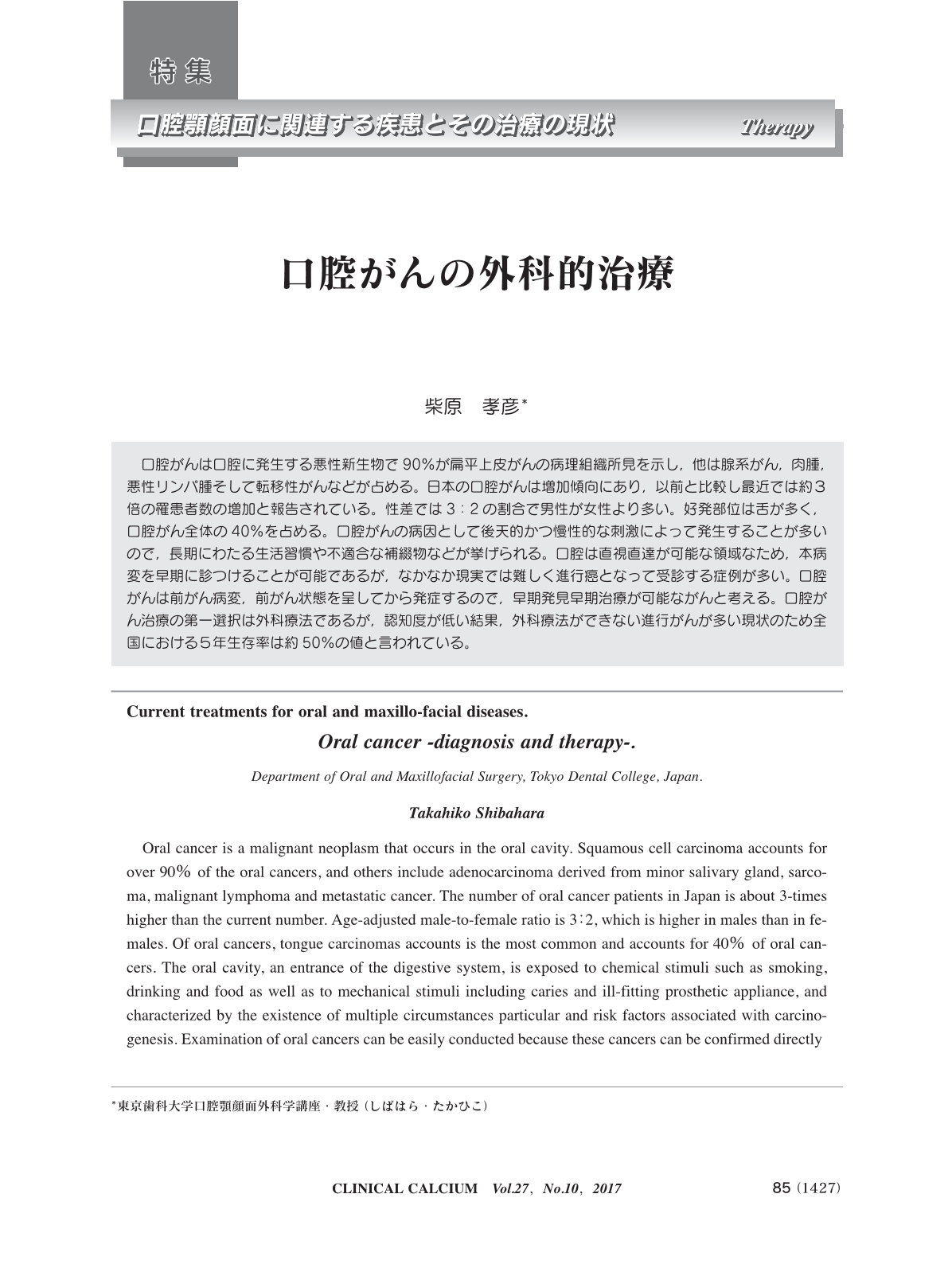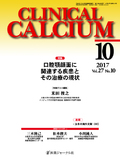Japanese
English
- 有料閲覧
- Abstract 文献概要
- 1ページ目 Look Inside
- 参考文献 Reference
口腔がんは口腔に発生する悪性新生物で90%が扁平上皮がんの病理組織所見を示し,他は腺系がん,肉腫,悪性リンパ腫そして転移性がんなどが占める。日本の口腔がんは増加傾向にあり,以前と比較し最近では約3倍の罹患者数の増加と報告されている。性差では3:2の割合で男性が女性より多い。好発部位は舌が多く,口腔がん全体の40%を占める。口腔がんの病因として後天的かつ慢性的な刺激によって発生することが多いので,長期にわたる生活習慣や不適合な補綴物などが挙げられる。口腔は直視直達が可能な領域なため,本病変を早期に診つけることが可能であるが,なかなか現実では難しく進行癌となって受診する症例が多い。口腔がんは前がん病変,前がん状態を呈してから発症するので,早期発見早期治療が可能ながんと考える。口腔がん治療の第一選択は外科療法であるが,認知度が低い結果,外科療法ができない進行がんが多い現状のため全国における5年生存率は約50%の値と言われている。
Oral cancer is a malignant neoplasm that occurs in the oral cavity. Squamous cell carcinoma accounts for over 90%of the oral cancers, and others include adenocarcinoma derived from minor salivary gland, sarcoma, malignant lymphoma and metastatic cancer. The number of oral cancer patients in Japan is about 3-times higher than the current number. Age-adjusted male-to-female ratio is 3:2, which is higher in males than in females. Of oral cancers, tongue carcinomas accounts is the most common and accounts for 40%of oral cancers. The oral cavity, an entrance of the digestive system, is exposed to chemical stimuli such as smoking, drinking and food as well as to mechanical stimuli including caries and ill-fitting prosthetic appliance, and characterized by the existence of multiple circumstances particular and risk factors associated with carcinogenesis. Examination of oral cancers can be easily conducted because these cancers can be confirmed directly by visual observation and palpation. The significance of oral cancer examination is early diagnosis and early treatment of not only oral cancers but also precancerous lesions, including leukoplakia and erythroplakia, and precancerous conditions, including lichen planus. The first choice for oral cancer therapy is surgical treatment. Unfortunately 5-year survival rate has not improved(50%overall)for the last few decades except in specialized cancer centers. Although the oral cavity is one of the accessible sites and about half the population receives regular oral examination through routine dental care in industrialized countries, most of the patients arrive at a late stage of disease(mostly with T3 and T4 cancers)because of lack of knowledge of symptoms and unawareness of oral malignancies.



